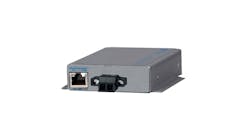Shutterstock 2477009207
The Industrial Internet of Things (IIoT) is quickly overtopping the banks of its traditional network connections to integrate digitalized, virtual, software-based capabilities. Here are some of the latest tools for developing those functions and accessing their benefits.
Containers are common and/or standardized pieces of software that work as separate runtime settings. They include programs and support functions, and provide the code for operating in any suitable environment. This lets programs in a container run quickly and reliably, even if they’re relocated or reproduced. Containers always operate in the same way, and are available for Windows and Linux.
As a language-independent, open-standard, information-interchange file format, JavaScript object notation uses readable text to send blocks of information. These include attribute-value pairs and array data types or other materials that can be serialized. JSON is a standard information format employed for asynchronous browser/server communications. Languages that enable JSON interchange include C++, C#, Java, PHP and Python. They typically include software that can generate, parse and coordinate JSON data.
Produced on a low-code development platform (LCDP) or a no-code development platform (NCDP), low-code/no-code software consists of visual development settings, which enable users to write code with a graphical user interface (GUI) instead of manual programs. Employing a GUI speeds up program development. LCDPs and NCDPs can save deployment, setup, training and maintenance expenses.
Node-RED is low-code, visual programming software that’s available free-of-charge for combining application program interfaces (API) with hardware and web services. Its browser-based editor produces JavaScript items, and helps combine flows with a selection of nodes, which can be delivered to its runtime with a single click. Application functions can be retained or distributed and used again. JSON stores flows created in Node-RED, while properly configured TLS links are created by MQTT.
Defining rigorous rules for producing Internet services lets REpresentational state transfer (REST) serve as a software architecture for distributed hypermedia systems. When services comply with REST's six requirements, they're designated as RESTful web services (RWS), and allow web-based computing systems to interoperate. RWSs permit interested systems to open and adjust textual recreations of Internet capabilities with a predetermined group of stateless functions.
Simple object access protocol (SOAP) is a messaging protocol for exchanging structured data when installing Internet-based services in computer networks. It uses XML Information Set software as its messaging format, and relies on application layer protocols, mainly hypertext transfer protocol (HTTP).
Unified namespace (UNS) lets users gather information, integrate context and meaning, and convert it into a format that other users and systems can comprehend. UNS achieves this by dividing computing functions from content computing, and establishing a centrally located repository for data and context. In this place, other users can digest or publish data required to do jobs. UNS typically joins with MQTT Sparkplug to deliver a platform for digitalized, scalable applications.





